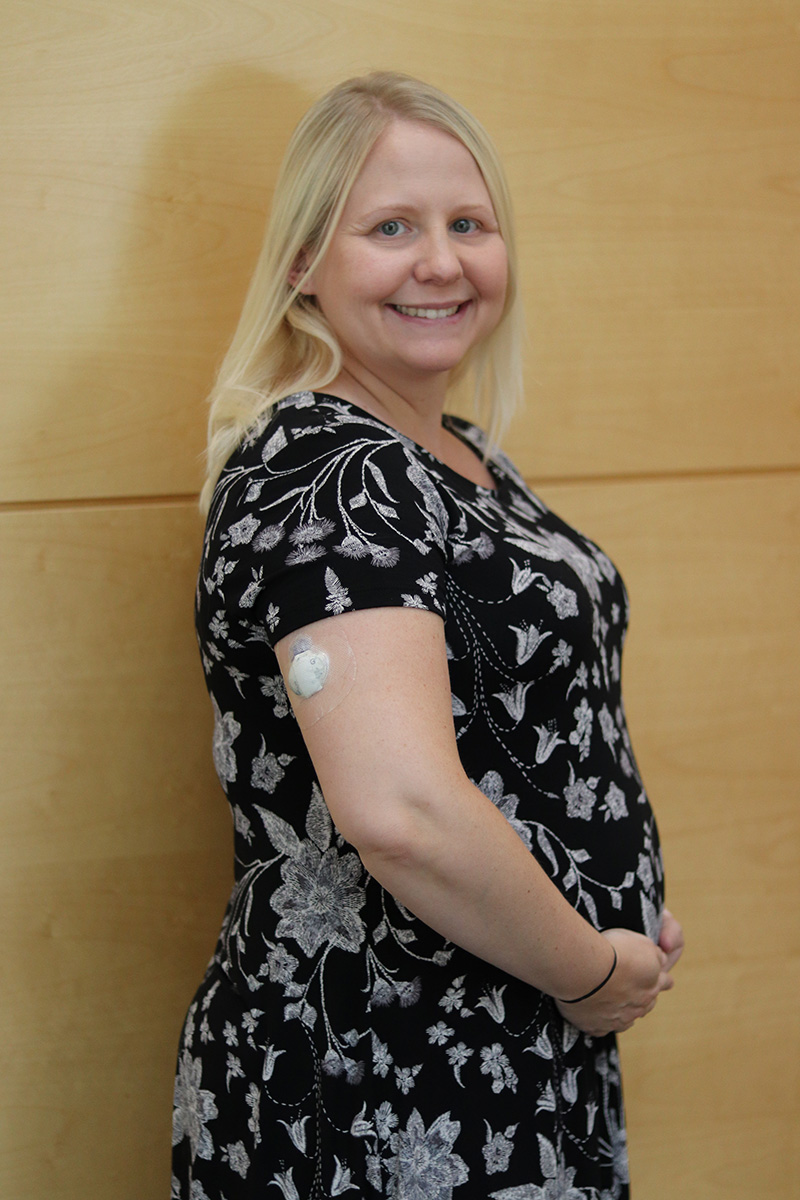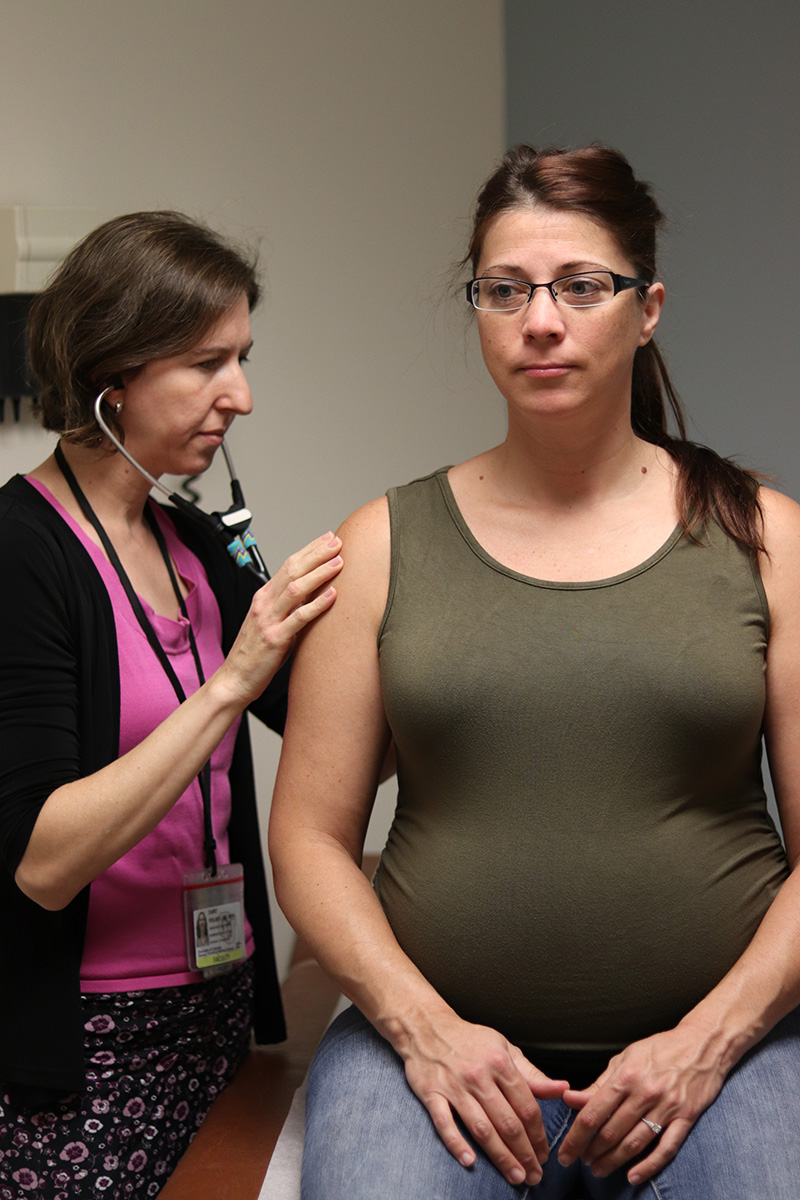
By Sarit Polsky, MD, MPH
Director of the Pregnancy and Women’s Health Clinic of the BDC
People who require intensive-insulin therapy and their supporters are well-aware of how difficult it can be to control glucose levels (A1C goal ≤7%) when faced with life stressors, blood sugar fluctuations with exercise, uncertainty about carbohydrate counting, etc. However, pregnancy adds another layer of complexity to the situation. In pregnancy, the goals are tighter and the physiology of pregnancy changes insulin requirements.
Pregnancies associated with type 1 diabetes (T1D) face numerous challenges. One of the biggest challenges is meeting glucose targets. The goals of diabetes therapy in pregnancy are to obtain and maintain near-normal glucose levels throughout the pregnancy. For women with T1D, the goal is an A1C <6.5% at the start of pregnancy and <6% as the pregnancy progresses. It also means glucose levels 70-95 mg/dL when waking up in the morning and before meals, and levels <130-140 mg/dL at 1 hour and <120 mg/dL at 2 hours after meals. Of course, we try to achieve these goals only if we can do it without significant hypoglycemia (low blood sugar).
In the first trimester, women are more sensitive to insulin and thus prone to hypoglycemia. Starting about 14 to 20 weeks of pregnancy, they face increasing levels of insulin resistance. In women starting off the pregnancy with good blood sugar control, we often have to decrease insulin doses in the beginning, but by the end of the pregnancy insulin doses may double or triple. Then, immediately when the baby and placenta are delivered, the insulin requirements plummet to the point where women are often, once again, on less insulin compared to what they used prior to the pregnancy.
 Question: How can women successfully manage glucose levels during pregnancy when the insulin requirements change so much?
Question: How can women successfully manage glucose levels during pregnancy when the insulin requirements change so much?
Answer: First, they shouldn’t do it alone. It’s very important to work with an experienced team of diabetes experts (medical professionals, certified diabetes educators, and certified dietitians). It’s also best to work with the diabetes experts before getting pregnant to plan ahead and manage the diabetes effectively from the start.
Second, it’s critical that women check and monitor glucose levels frequently. This means checking finger-stick blood sugar levels before meals, after meals, at bedtime, and over-night and/or using a continuous glucose monitor.
Third, women should work with their diabetes team to make sure that insulin delivery is optimized. This may mean changing the type of insulins used for injections or getting on an insulin pump.
Fourth, women should be working with the diabetes team to adjust insulin doses every week throughout the pregnancy.
Question: Why are the glucose goals so strict in pregnancies associated with T1D?
Answer: The stakes are high. When there are persistently high glucose levels, the risks are increased for adverse outcomes. These include:
- losing the baby (miscarriage or stillbirth)
- birth defects (like holes in the heart or a small brain)
- abnormal size of the baby (too small or, more commonly, too big)
- Mothers developing high blood pressure conditions
- Delivering the baby early
- Delivering via c-section
- Baby coming out with hypoglycemia, low oxygen, or jaundice
- Baby requiring admission to the neonatal intensive care unit
Research shows that the risks of these things happening goes down significantly when the glucose levels are at goal throughout the pregnancy. Working with experienced diabetes experts and a high-risk obstetrician helps reduce the risks for these events.
 Question: Can women with T1D have healthy pregnancies?
Question: Can women with T1D have healthy pregnancies?
Answer: When women come to our clinic for pre-pregnancy planning and at the first pregnancy visit, we go over the goals (glucose levels, targeted weight gain, etc.), risks to mother and baby, monitoring for diabetic complications, nutrition in pregnancy, and more. We want to educate women on the importance of all these things. It can be overwhelming for them to hear and read about it all. For me, it’s also important for women to know that they can have happy and healthy pregnancies, but they will have to work harder than women who don’t have diabetes to do it.
In summary, it’s true that pregnancies associated with T1D face many challenges. But, with the proper education, resources, diabetic tools, and team of experts, pregnant women with T1D can successfully face the challenges ahead of them. That is why the Pregnancy and Women’s Health clinic at the Barbara Davis Center is so happy to partner with the Children’s Diabetes Foundation to offer this Helping Little Hands Program. Providing extra resources to mothers in need helps advance that mission. We are passionate about improving the health of mothers and babies with T1D. Caring for pregnant women is a privilege. Together, we hope to make an even bigger difference for this very special group!
The Children’s Diabetes Foundation is proud to sponsor the Helping Little Hands Program, which supports pregnant women with diabetes who lack the financial resources for diabetes technology and care, which are two crucial elements for the health and safety of mom and baby.





